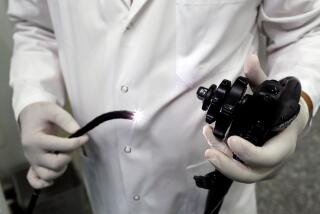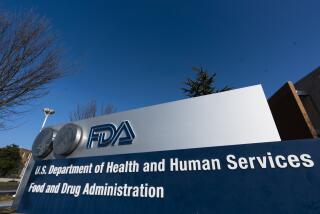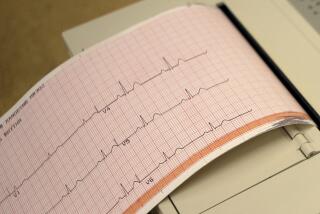Fighting Cancer, the Elusive Foe
The goal is this: Someday cancer patients will be able to live with their disease as a manageable chronic illness, just as millions of people today deal with high blood pressure, heart disease and diabetes.
When President Nixon signed the National Cancer Act about three decades ago, many people described the fight against cancer in terms of another ambitious national mission. “If we can put a man on the moon,” many Americans asked at the time, “why can’t we cure cancer?”
But the moon landing was the successful application of well-understood scientific and engineering principles. Cancer, by contrast, was then a profound mystery that only now is beginning to yield some of its secrets. We have learned in the past generation that cancer is no single disease with a single cure, only myriad conditions with cells gone wrong, reacting differently in different patients. But the hard work of scientists, the determination of doctors, and the struggles of patients have yielded welcome progress during the past generation:
* There is a new and burgeoning field of cancer prevention, with promising tests underway of compounds to prevent the dread disease. Tamoxifen shows dramatic progress in cutting the rate of breast cancer in high-risk women. Major studies are underway to see if selenium, vitamin E and other substances can reduce prostate cancer in men.
* Screening makes a tremendous difference. The mortality rates for breast cancer and prostate cancer are dropping because massive publicity has persuaded millions of women to get mammograms and men to get the PSA test for prostate cancer.
* New targeted therapies will enable patients to survive and thrive without the terrible side effects of chemotherapy and radiation.
A generation ago, a cancer diagnosis was a veritable death sentence. Now, about half of those who get cancer will survive the disease--and die of some other cause. Researchers and doctors are focused on helping the other 50% who now are killed by their cancers.
Fighting cancer is still a deadly battle, but we have more and better weapons because our understanding is deeper than it was 30 years ago.
But we have learned some sobering lessons, too. Cancer is not a single disease with a single cure to be discovered. There will be no magic bullet or miraculous vaccine to deal with cancer. Rather, the battle will continue on many fronts. Vaccines may be found for some forms of cancer. Therapies will be tailored to individual patients because of their unique combinations of genes and disease. And prevention efforts will be expanded.
The sobering reality, however, is that billions of dollars have been spent without a clear victory in the war, and billions more must be directed to the battle. The early detection means better survival rates for the major cancers: breast, prostate, colorectal. But for some of the deadliest forms of cancer, such as lung and liver, the progress of research may be measured by the improvement in a patient’s quality of life after diagnosis, rather than survival rates.
A generation of research into cell biology has yielded a key insight: The body replaces cells every day, turning cell production on and off just as a thermostat switches itself on and off to maintain a comfortable room temperature. If a thermostat gets stuck, “the temperature would continue to rise, and we’d get uncomfortably hot,” Dr. Brian Druker, director of the Leukemia Center at Oregon Health and Science University, said at a recent seminar on the 30th anniversary of the war on cancer. “That’s exactly what happens in a cancer,” he said. “It’s as though a thermostat gets stuck on. The cells grow, they divide, they multiply, and form a tumor.”
Adopting the war analogy, the traditional treatments for cancer--using radiation and chemotherapy--are like artillery shells, destroying everything in the area, good and bad cells alike. The new treatments can be likened to smart bombs, targeting the cells that have mutated into cancers.
Simply put, the new compounds turn off the growth factors in the cancer cells, preventing them from multiplying and spreading through the body. Two notable recent successes are Herceptin, developed at UCLA and used against breast cancer, and Gleevec, used against chronic myeloid leukemia. The use of Gleevec “is an amazing thing, taking a pill once a day. I wouldn’t have believed it if you had told me 10 years ago, that we would have a pill that targets specific cancer cells with so few side effects,” said Judith C. Gasson, a professor of medicine and biological chemistry and director of UCLA’s Jonsson Comprehensive Cancer Center.
“We have worked on this for 30 years, knowing that if we could understand the molecular defects that lead to cancer, we would be smart enough to develop tools to block those genes,” Gasson said. Meanwhile, scientists have discovered more than 100 genetic markers that could indicate which individuals are predisposed to developing certain types of cancer. Although there is no absolute way to be sure who will become a cancer patient, doctors will eventually be able to identify those at high risk, said Dr. Peter Greenwald, director of cancer prevention at the National Cancer Institute.
The analogy, he says, is to cardiologists. At one time, they just treated heart attacks. Now, they can use the risk markers--high blood pressure and high cholesterol--to figure who is a candidate for a heart attack, and then use medication and proper diet to bring down those risks. For those at risk of prostate cancer, for example, the tests underway with selenium and vitamin E will determine if those compounds can be an effective means of prevention, he noted.
Progress has brought a seeming paradox. If we are doing so much better, why does the cancer rate increase? But this seeming bad news is really encouraging: It reflects the early detection and diagnosis, which increase the chances for survival in most of the major cancers. The good news is that the death rate from cancer has been dropping, declining by about 1% a year, starting in the early 1990s, according to National Cancer Institute figures. The incidence of breast cancer rose 32% between 1973 and 1998, while prostate cancer climbed 116%, according to NCI figures. It doesn’t reflect a deadly epidemic, but rather increased awareness that leads to demand for testing and early diagnosis. “The diagnosis of breast cancer continues to go up, and this is typically related to the screening, which finds cancer in the early stages,” said Brenda K. Edwards, associate director of research at the NCI.
In a previous era, many people would have been stricken with the disease but not diagnosed until too late to be helped. Now they have the benefits of screening, the detection that brings treatment. The death rates from prostate cancer and breast cancer have been falling significantly since 1995, Edwards noted. Colorectal cancer death rates also have been declining.
Some cancers, however, are less amenable to successful treatment, and early detection may not improve longevity.
“You can move the cancer diagnosis earlier, but you may not have a treatment that extends someone’s life,” said Leslie Bernstein, research professor and senior associate dean at USC’s Keck School of Medicine.
“Suppose we diagnose a lung cancer early, in 2002, and treat it and the person dies in 2006,” she said. “Without screening, the diagnosis would have been made in 2004 when the person came in with clinical symptoms like a heavy cough. Yet for this person, treatment is ineffective and no matter what you do, he will die in 2006. So it is an error to say that the early screening improved the survival rate.”
Even as the tools of science get better, however, the population of cancer patients inevitably grows larger. Many of those who would have died at comparatively young ages in earlier eras from heart disease or strokes are living long lives, and coming down with cancers that strike past age 65.
One’s susceptibility to cancer grows as a person ages. He is more susceptible to cancer because he has more years of exposure to carcinogens, and his immune system is weaker in defending against disease. There is more time for something to go wrong in the thermostat.
Cancer, therefore, is looming as a particular threat to the massive baby boom generation, Americans born in the years 1946 through 1964. The oldest of the baby boomers are nearing 60, when the incidence of cancer begins rising sharply. “Each decade your risk of developing cancer increases,” said UCLA’s Gasson.
Scientists’ ultimate weapon against cancer will likely be their deeper knowledge of the working of the genetic system. The mapping of all the genes in the human body may lead to an understanding of which genes are triggering the cancers.
There will be more focus on an individual’s genetic makeup, and how that makeup affects whether certain exposures increase cancer risk. “Some women may have a genetic profile that metabolizes estrogen into a more potent form, paving the way for development of breast cancers,” Bernstein said. “Once we can determine what this profile is, we can predict which women can safely take estrogen for menopause and which ones cannot.” Armed with individual genetic profiles and family histories, she said, doctors could be more precise in their diagnosis and treatments.
“We are hoping to develop ways to differentiate those cancers that will progress from those that won’t,” Bernstein said. “This would tell us which women we will have to monitor carefully, and which women will have nothing to worry about.”
The bottom line is that today’s scientists and researchers are much better-armed soldiers for the war on cancer, with superior weapons, and much improved intelligence about the nature of the enemy. But they are more modest than their peers of 30 years ago, who too often rushed to proclaim victory.
Soldiers in the war against cancer need “humility at certain times, and especially a capacity to speak freely about what we still don’t know, and how much remains to be done ... ,” Dr. Samuel Broder, a former director of the National Cancer Institute, cautioned recently. “Patience, scholarship and quiet determination are really what matter. Cancer cells, I think, are unimpressed by rhetoric, bravado, slogans or hype.”






